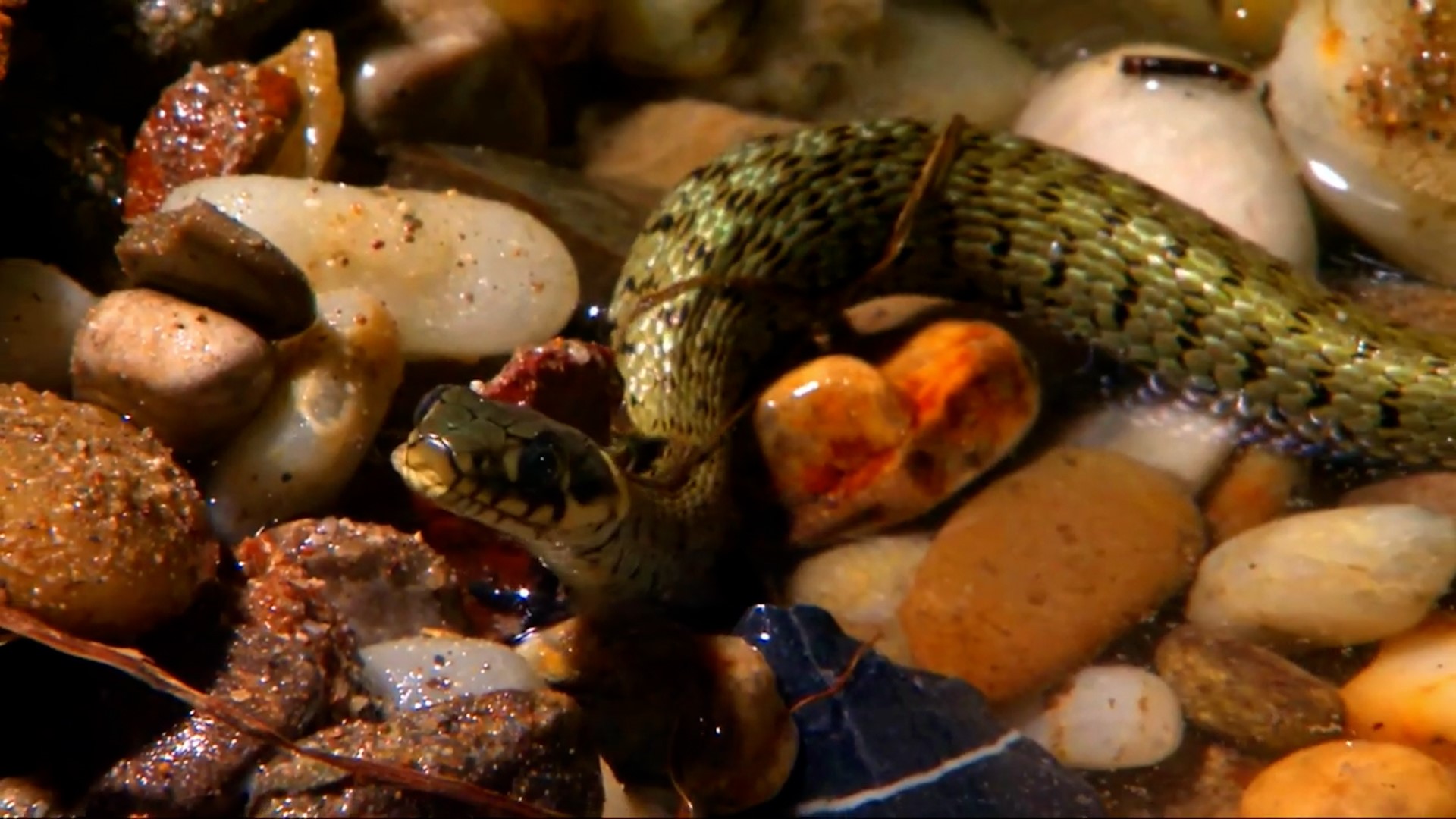HUNTSVILLE, Ala. — Snakebite season in Alabama runs from roughly mid-March to mid-November. “Snakes are cold-blooded, so they like to be out when it is around 80 Fahrenheit,” said William Rushton, M.D., co-director of the UAB Comprehensive Snakebite Program. “In Alabama, with our weather, it is usually evenings when people are out and get bitten, rather than early mornings.”
The relatively low mortality figures for snakebites in the United States may be surprising — an average of five deaths per year following 7,000–8,000 bites. One reason is that up to 50 percent of snake bites are “dry,” meaning that no venom is released. But the minimal mortality also owes a lot to the widespread availability of antivenom at hospitals where snakebites are common. Nearly all hospitals in Alabama carry a minimal supply of one of the two FDA-approved antivenoms on the market, which bind to the chemicals in snake venoms and obstruct them.
“Internationally, the story is much different,” Rushton said. “More than 100,000 people die each year from snakebite.” And according to statistics from the World Health Organization, around three times as many people annually experience amputations and permanent disabilities caused by bites.
"About 10% of envenomation in Alabama are from rattlesnakes," Rushton explains, "The rest are from other pit vipers, including copperheads and cottonmouths/water moccasins. (Doctors are quick to distinguish envenomation from the more all-encompassing term snakebite, because up to 50 percent of bites are “dry,” with no venom injected.) The most common complications from envenomation are “local wound damage, swelling of extremities and these severely painful blood blisters,” Rushton said.
Snakebite poisoning causes a variety of symptoms:
- Severe pain and swelling at the wound site
- Nausea and vomiting
- Blurred vision
- Thirst
- Difficulty breathing
- Sweating
- Muscle cramps and weakness
- Dizziness
- Numbness in face and limbs
- Shock, a condition caused by lack of blood flow, which damages organs by depriving them oxygen and nutrients
Toxins from snakebite poisoning can cause coagulopathy, or thinning of the blood, which decreases the blood’s ability to clot. Coagulopathy may result in uncontrolled internal or external bleeding, causing cause damage to joints, muscles, or internal organs. Long-term effects of snakebites include chronic limb swelling, wounds, and muscle damage.
"When a snake envenomates a person, often on the foot, the tissues fill up with blood," Rushton explains. “For someone with little experience of snakebite, that swollen leg can look like dead, necrotic tissue that needs to be removed to avoid wider damage. That’s a hallmark of our program, to keep people away from unnecessary or harmful procedures,” Rushton said.
“These large blood blisters are cared for by a wound-care specialist who has specific training of the mechanisms of envenomation. What we don’t want is someone trying to debride [cut away] that tissue, at least early on during active envenomation.” Ruston added.
Venomous snakebites are treated with antivenom, which is a medicine used to stop snake venom from binding to tissues and causing serious blood, tissue, or nervous system conditions. The use of antivenom depends on how much poison was injected and the type and size of the snake. Antivenom is the only specific treatment that can help prevent or reverse most of the effects of snakebite toxins when used early.
In addition to antivenom, additional treatment such as artificial respiration, kidney dialysis, wound care, and comprehensive rehabilitation services are needed to effectively treat snakebite.
The innovative compression and wound dressing techniques that Shapshak, Kelly and their team use in the Wound Clinic are effective for healing snakebite wounds as well, Shapshak says.
But this is not intuitive to most physicians. In typical emergency medicine and wilderness medicine courses, physicians are taught to avoid tourniquets and other acute pressure immobilization because it could cause venom to be concentrated and create more damage.
“That gets extrapolated to, ‘Oh, you should never have compression,’ even five days out, when the venom is gone,” Shapshak said. “That causes wound breakdown and problems with muscular health, we have found. These patients need soft-tissue wound care and lymphedema [swelling] control primarily, and that is what we specialize in. It’s just that no one had contextualized this to snakebite.” (Shapshak has presented on his experiences with snakebite to national wound-care conferences.)
UAB Medicine provides highly specialized care for snakebite through the UAB Comprehensive Snakebite Program, which involves many disciplines. The team includes medical toxicologists, poison center specialists, wound care physicians, pharmacists/clinical toxicologists, hospitalists, and physical therapists.
Patients who arrive at UAB Medicine are treated by Emergency Medicine physicians who have special training in snakebite treatment. Early phases of care include standardizing wound measurements, providing pain relief, assessment for systemic symptoms, and advanced testing for blood thinning. Patients are then admitted to highly trained patient care areas to receive serial measurements and overnight monitoring for coagulopathy.
A medical toxicologist trained in snake envenomation works with the patient’s healthcare team to provide a detailed antivenom plan. This stage of treatment focuses on improving mobility, range of motion, early joint usage. Inpatient wound care specialists are also available if needed.
Patients who are not treated at UAB have their care augmented by the Alabama Poison Information Center (APIC) at Children’s of Alabama. Any physician in the state can consult with experts at APIC for recommendations and care input. APIC covers all health care facilities in the state of Alabama and is available 24/7 for patient and/or physician consultation.
Treatment may continue after hospital discharge. Outpatients follow up is available at the UAB Comprehensive Wound Care Clinic, where specialists work closely with the APIC for long-term lab monitoring of potential venom injury while providing strategies for treatment of limb swelling and localized wound care. Physical therapy is available for those patients who require improved limb function recovery.

